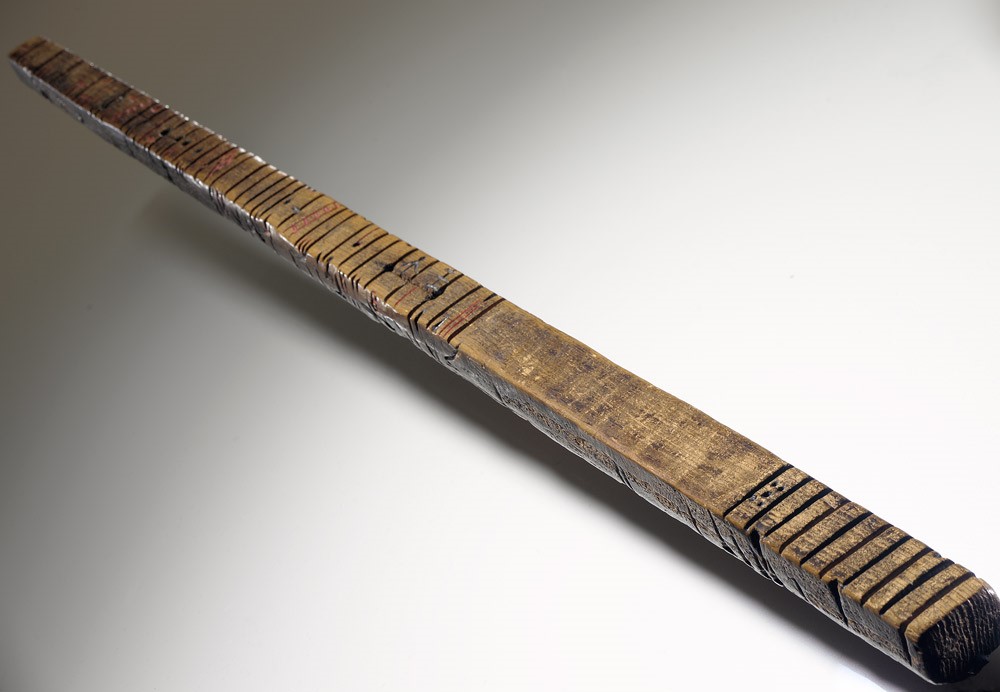Table of Contents |
Thus far in this U.S. History course, we have asked quite a few questions about history. The questions can come across as simple, but as we have discussed, the answers are not always clear. So far, we have asked the following questions:
That question may seem relatively straightforward, but finding an answer can be more complicated than you think. For example, we know that President Richard Nixon resigned from office on August 9, 1974. We know this because of the following:
Recall that the Mayan civilization was one of the rare pre-Columbian societies that used a written language. But history occurred outside of Mesoamerican Mayan cities, and historical narratives from prehistoric societies have been created.
Historians have used a number of tactics to piece together stories about the pre-Columbian past in America. We will cover several methods that historians have used to create their stories about the past.
When studying the histories of prehistoric societies, historians often wear different professional and academic hats. One of these hats is that of the archeologist, who specializes in archeology.
Archeologists have been able to piece together stories about America’s past by finding literal pieces from the past. Archeologists dig into the earth to find evidence of human activities and construct narratives using the evidence they find. For example, historians knew very little about the Native American peoples who lived along the Mississippi Valley until archaeologists began excavating sites around the region.

Beginning in 1905, an archaeologist named Clarence Bloomfield Moore began excavating one of the largest of these sites, called Moundville, in Alabama. Using the evidence he found in the earth (e.g., pottery, figurines, etc.), Moore was able to determine that these mounds were used to house elite social figures. He even found evidence that some mounds were used for ceremonial purposes.
With the help of archaeologists like Moore, we have been able to construct a more concrete narrative of the peoples who lived in these mounds. We know the following about the Mississippian cultures:
Another example of prehistoric narratives developed in the American past can be found in the cultural practices of the Tohono O’odham people. European settlers in the New World knew very little of these people and often lumped their histories together with that of larger, more well-known, Native American cultures. For example, the Spanish missionaries and conquistadors often perceived the Tohono O’odham similarly to the Apache, who were their neighbors in the Sonoma region (i.e., Arizona and Northern Mexico). Much of this was attributable to European disinterest in indigenous identity.
The Tohono O’odham people also had a way of retelling their own history that differed from the Europeans. Primarily, they used what have been called calendar sticks.

Historians view these calendar sticks as essential primary source evidence in the recreation of the Native American past in North America. However, this primary source cannot be interpreted by the historian alone. In the Tohono O’odham tradition, a storyteller must remember the marks made on their people's calendar stick and retell the history.
Using these calendar sticks and with the help of Tohono O’odham storytellers, historians have been able to create a much clearer vision of their past. For example, we now know that the Tohono O’odham lived in the Sonoran region for several hundred years (the actual dates are not fully known) and they had a tumultuous existence with the more populous Apache peoples. Oral history approaches, like these, have allowed historians to learn more about Native American experiences, philosophies, and important events than have many of the other primary sources.
The Tohono O’odham were generally an agriculture-based society. The neighboring Apache raided their communities when they ran out of food. The Apache knew the Tohono O’odham would have food stored away. We know this because Tohono O’odham storytellers remembered these events and marked them on calendar sticks.
Another option when taking a look at the pre-Columbian past of America is to examine evidence Europeans created after setting foot in the Americas. This may come across as going backward, and you would be right to think that. There are a couple of tricky issues when using this kind of primary source evidence, as it provides a reverse, or outside, perspective. But these sources can be used to look back into the past as long as it is done with care.

We can learn things about Aztec imperial dominance from the city itself. When looking at this map, we can see that the city of Tenochtitlán was massive. So massive, in fact, that every single other European city was dwarfed by its size. You can imagine that a city so large could only be controlled through imperial rule, similar to how Europeans controlled their major cities. But Tenochtitlán was developed well before any European stepped foot in Mesoamerica.
One thing that can be noted from this city map is that there are causeways that cut into the city center. By looking at this map and taking into consideration the known fact that the Aztecs ran an empire, historians can conclude that these were likely used as access routes to pay tribute. Subjugated tribes and peoples from outside the city were able to bring their goods into the city walls and they used these access routes as a way to appease the empire. This also tells a historian that the concept of imperial domination was not uniquely European. All of this can actually be derived from this single primary source, using a well-trained historian’s eye.
There is a significant issue with sources like these, however. We must always remember to identify the perspective and bias in a primary source. This is especially true when using a European source to understand the pre-Columbian past. Europeans, like the Spaniards, typically looked unfavorably upon the local peoples, and their sources often reflect this.
Source: This tutorial curated and/or authored by Matthew Pearce, Ph.D with content adapted from Openstax “U.S. History”. access for free at openstax.org/details/books/us-history LICENSE: CREATIVE COMMONS ATTRIBUTION 4.0 INTERNATIONAL